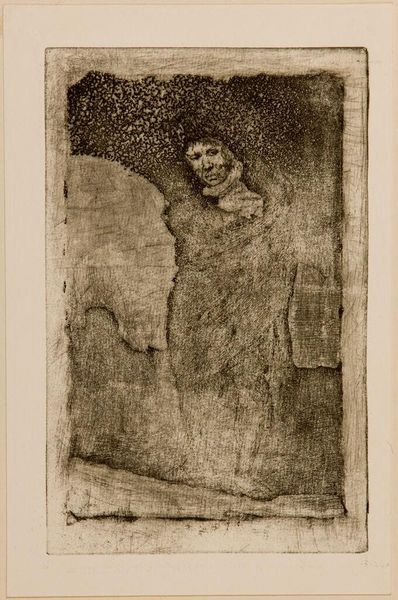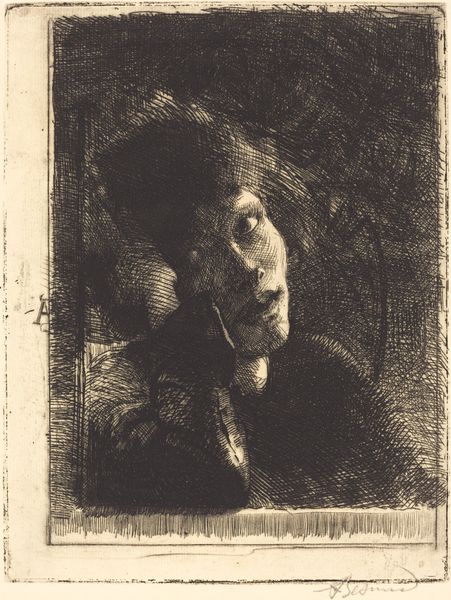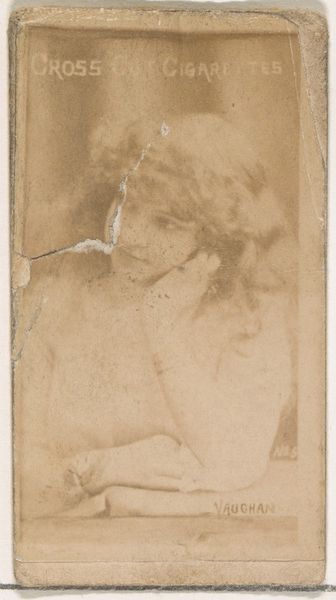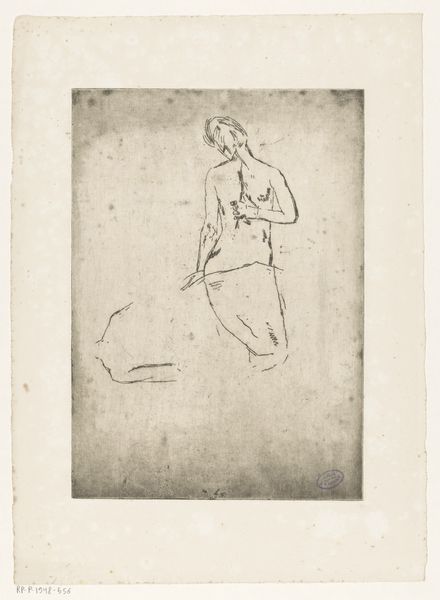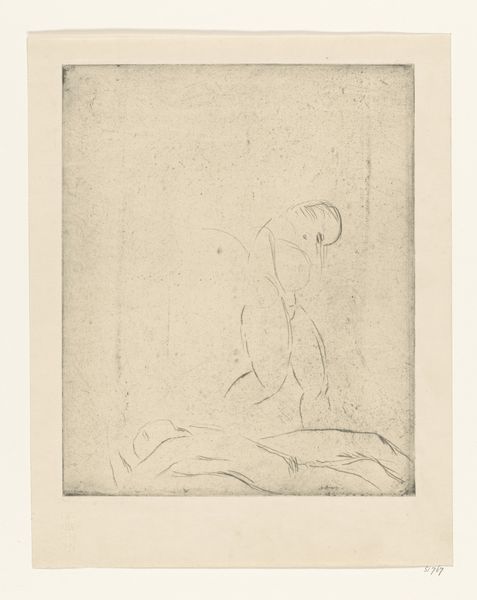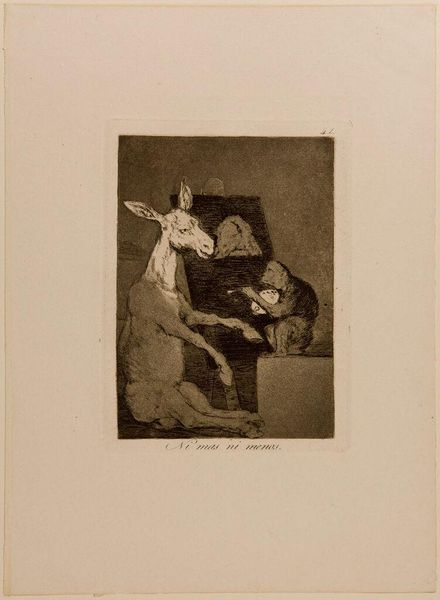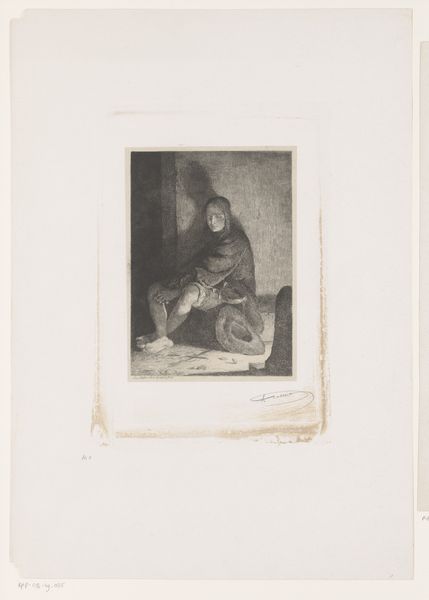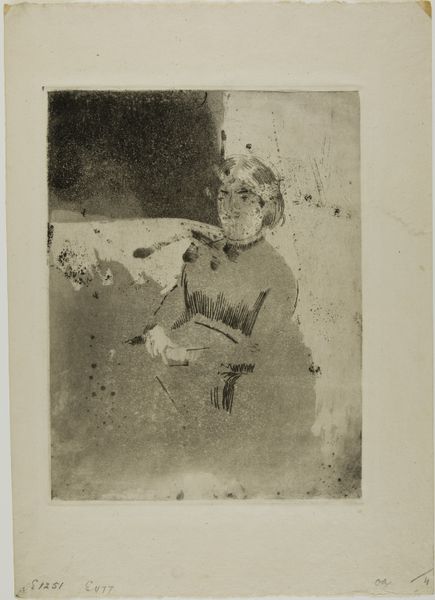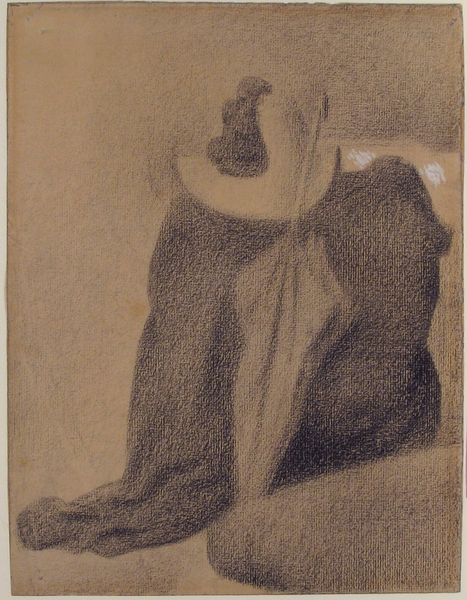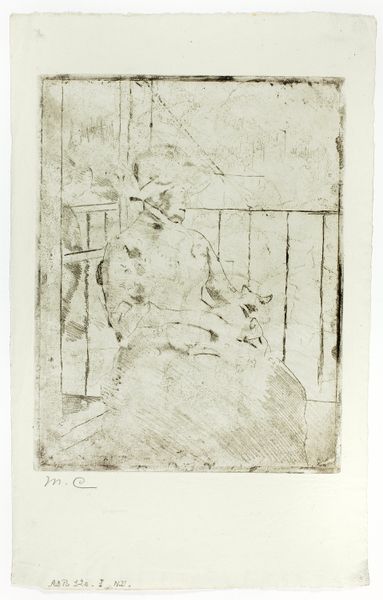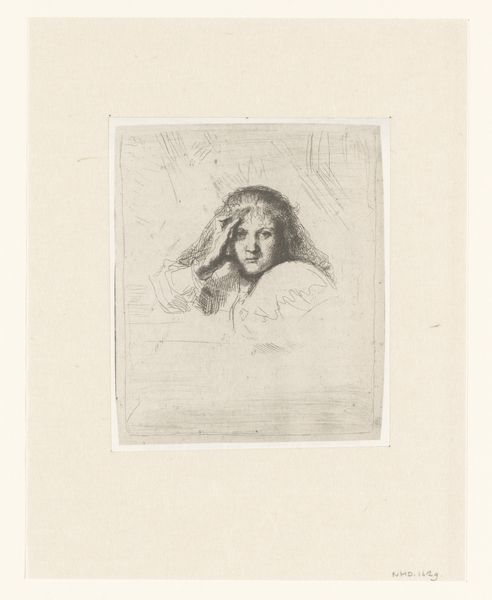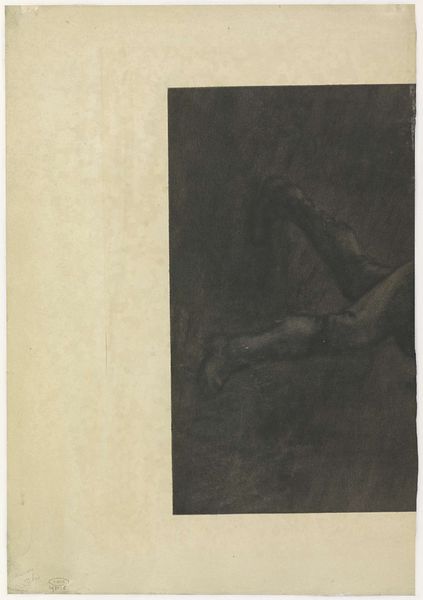
Copyright: CC0 1.0
Editor: This is Goya's "Man with a Cloak" at the Harvard Art Museums. The etching has such a stark, haunting quality. What historical currents do you think informed Goya’s vision here? Curator: This image, stripped down as it is, speaks volumes about the anxieties of Goya’s time. Consider the historical context: revolution, war, and the crumbling of old orders. It's not just a portrait; it's a social commentary on the disempowerment of the individual. Where do you see that disempowerment visually expressed? Editor: It's there in the figure's isolation, the rough texture, and the ambiguity of the cloak. But, how can we tell it’s more than just an aesthetic choice? Curator: The cloak itself can be seen as a symbol of concealment and perhaps even oppression. It obscures individuality, turning the man into a cipher. Think about the use of cloaks in political assassinations of the time, and how Goya captured that anxiety. Editor: Wow, I didn't consider that. It gives the piece a completely different and deeper meaning. Curator: Exactly! Art becomes a mirror reflecting the social realities of the period. It's not just about what we see, but what those images meant then, and what they can mean now.
Comments
No comments
Be the first to comment and join the conversation on the ultimate creative platform.
